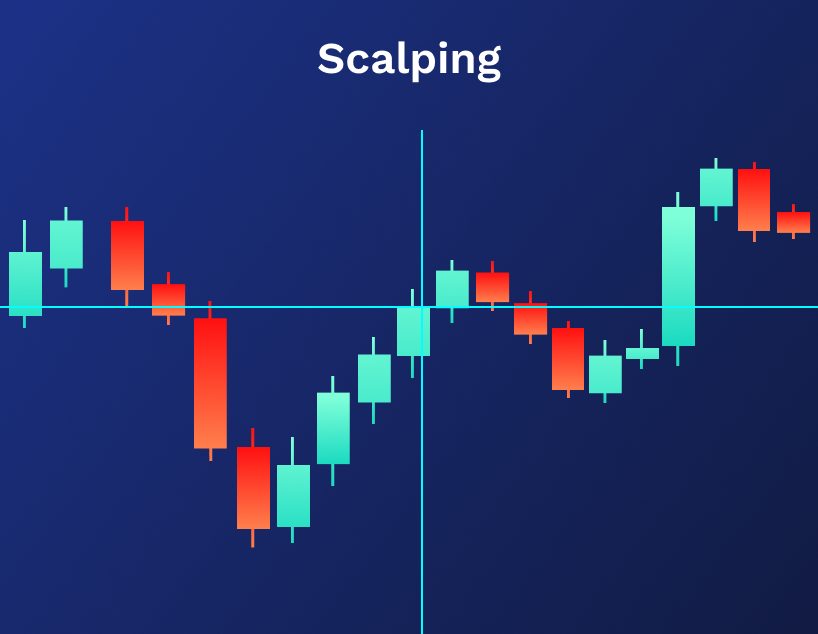In the dynamic world of stock trading, strategies come and go, but one that has stood the test of time for its unique approach is Scalping. In this comprehensive guide, we’ll delve into the definition of Scalping, how this trading strategy is employed, and provide examples to illustrate its practical application. Whether you’re a seasoned trader or a newcomer to the financial markets, understanding the nuances of Scalping can potentially enhance your trading prowess.
Understanding Scalping in Trading
Definition and Basics
Scalping is a trading strategy meticulously designed to capitalize on minor price fluctuations in a stock’s value. Traders employing this strategy, known as scalpers, execute a considerable number of trades within a single day. The underlying philosophy is rooted in the belief that capturing small price movements is more attainable than predicting significant shifts. By accumulating many small profits throughout the day, scalpers aim to generate substantial gains when combined.
The basics of Scalping involve using larger position sizes for smaller price gains within the shortest possible holding time. Typically performed intraday, scalpers buy or sell shares at the bid or ask price, swiftly selling them for a profit a few cents higher or lower. Holding times can range from seconds to minutes, closing positions before the market trading session concludes.
Scalping Characteristics
Scalping is a fast-paced activity demanding precision timing and execution. Traders leverage day trading buying power and utilize technical indicators such as stochastic, MACD, RSI, moving averages, Bollinger bands, and pivot points. To avoid pattern day trader rule violations, a minimum equity of $25,000 is necessary. The use of leverage makes Scalping a high-risk trading style, reliant on technical analysis and short-term price fluctuations.
Common mistakes made by scalpers include poor execution, lack of a solid strategy, failure to implement stop-losses, over-leveraging, late entries, late exits, and overtrading. The psychology behind Scalping requires discipline, flexibility, and quick decision-making to adapt to rapidly changing market conditions.
Example of Scalping
To illustrate Scalping, consider a trader using this strategy on a stock like ABC, currently trading at $10. The trader executes trades in bulk, perhaps 50,000 shares, aiming for small price increments of, say, $0.05. By repetitively buying and selling during opportune price movements, the trader accumulates small but consistent profits throughout the day.

How Scalping Trading Works
Overview
Scalping involves taking small profits from a multitude of trades, with positions held for short durations measured in seconds or minutes. This trading style is characterized by its frequency, demanding decisiveness, discipline, and a robust exit strategy. Scalping requires traders to be adept at technical analysis and utilize various tools to identify profit opportunities in highly liquid assets.
Principles of Scalping
- Lower Exposure Limits Risks: Brief exposure in the market minimizes the chances of encountering adverse conditions.
- Small Moves Are Easier to Obtain: Scalpers capitalize on smaller price moves, avoiding the need for significant imbalances in supply and demand.
- Small Moves Happen Frequently: Even in seemingly quiet markets, scalpers target smaller price movements to exploit profit opportunities.
Scalping vs. Day Trading
While both Scalping and day trading involve multiple trades within a day, key distinctions exist. Day traders use longer timeframes (1 to 2 hours) with an average account size, while scalpers operate at ultra speed, focusing on the shortest timeframes (5 seconds to 1 minute) with larger account sizes. Scalpers aim for immediate results and rely heavily on experience and market trends.
Scalping Secrets: Options Trading Like a Pro
Real-Life Example
To grasp the practical application of Scalping, consider a real-life scenario involving options trading. In this case, a trader executes a quick scalp using a single Tesla (TSLA) put weekly contract. The option is bought for $4.90 and sold for $5.12 within two and a half minutes, yielding a swift profit of +4.5%. The trader capitalizes on Tesla’s minor price movement, showcasing the allure of Scalping.
Common Scalp Trading Timeframes
Successful scalp trades often transpire in less than 10 minutes, with traders focusing on short-time technical signals. Scalpers rely heavily on 1-minute and 5-minute candlestick charts for their speed and precision. While other traders might find these timeframes noisy, for scalp traders, they are essential tools for quick decision-making.
Pros and Cons of Scalp Trading
Advantages
- Quick Profits: Scalping allows traders to make swift profits within seconds.
- Multiple Compounding: By compounding small amounts multiple times a day, traders can expedite capital growth.
- Lower Risk: Limited exposure to major economic events and shorter trade durations reduce overall risk.
- No Issues from Economic Events: Scalpers primarily focus on technical analysis, minimizing concerns related to long-term market volatility based on major economic events.
Disadvantages
- Transaction Costs: For traders with low capital, transaction costs can significantly impact overall profitability.
- Slippage and Execution Risk: High-frequency trading may result in issues with order execution, leading to slippage.
- Mental Pressure: The constant need for quick decision-making and high-frequency trading can induce stress.
Should You Scalp?
Adopting Scalping
The decision to adopt Scalping as a primary or supplementary trading style hinges on personal preferences. Scalpers utilize short timeframes, tick or one-minute charts, demanding dedication, discipline, and speed. If you thrive in a fast-paced environment and value immediate profits, Scalping might align with your trading personality.
Conclusion
Scalp trading, a high-frequency method, offers the potential for quick profits but requires expertise. Whether you’re attracted to the excitement of frequent trading or the allure of compounding small gains, Scalping can be a valuable addition to your trading toolkit. Remember, success in Scalping demands commitment, practice, and the ability to stay focused amid the rapid pace of the market. While there’s no one-size-fits-all strategy, understanding Scalping can empower you to navigate the complexities of short-term trading with confidence.
In your journey through the financial markets, consider exploring Scalping cautiously, acknowledging both its merits and challenges. As with any trading strategy, continuous learning and adaptation are key to evolving into a proficient and successful trader.

